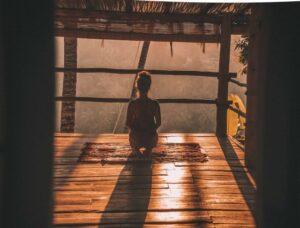Trekking versus hiking. What’s the distinction? Even so, what distinguishes hiking from trekking? The terms “hiking” and “trekking” are frequently used interchangeably in the outdoor community, but do they genuinely signify the same thing? Since so many words may be used to describe walking in nature, such as strolling, is a trek merely another term for hiking?
All of us have a general understanding of what hiking and trekking are. Don’t worry, though, because you aren’t the only one who mistakenly believed that hiking and trekking were interchangeable hobbies. Explore in-depth how they differ from one another and how this article can help you better prepare for your personal experience when you choose one of these.
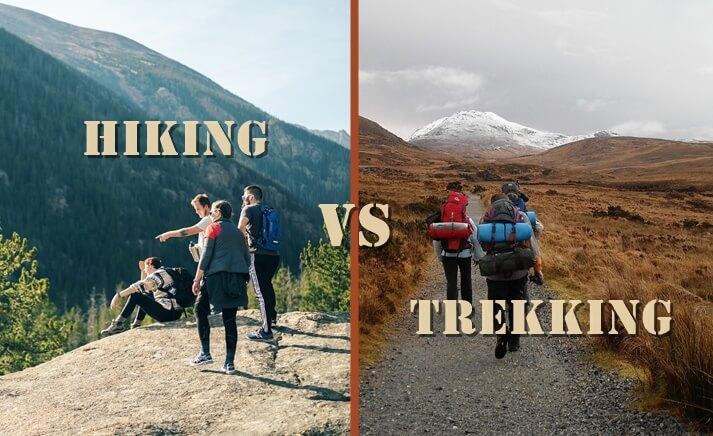
To help you understand what hiking and trekking are and their differences, we look at their definitions and characteristics. We must first define these terms to comprehend the distinctions between hiking and trekking.
This article will go through the main distinctions between hiking and trekking. By the end of this article, you will have learned everything that there is to know about hiking and trekking.
What is Hiking?
In the definition of hiking, the term “walk” is used, which is generally thought of as a happy, simple, and pleasant activity. Therefore, when someone mentions hiking, they usually mean an enjoyable day trek that isn’t too difficult and shouldn’t present too many problems.
Comparatively speaking, hiking is one of the more straightforward adventurous activities. Anyone of any age can do it.
Hiking entails spending a lot of time on trails. It involves walking over a variety of surfaces, including hills and deserts.
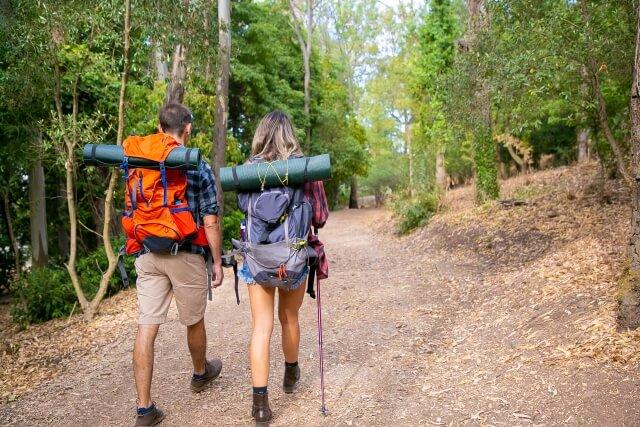
People typically go trekking for a half or full day on a predetermined route. The trails for hiking have markings. It is comparable to moving from a starting point to an ending point. Then you can make your way back to where you started.
While hiking is a great outdoor activity for everyone, risks are involved. You will be in a remote area. Therefore, there is a chance of harm.
Doing some preliminary study about the trail you intend to walk on is best to prevent such risks. You should always wear appropriate clothing, footwear, and first aid supplies to avoid injuries.
A low-risk activity that lets you experience the best of wildlife is hiking. Hiking is not only fantastic for your physical health, but it is also a fantastic stress reliever.
What is Trekking?
On the other hand, trekking usually takes place outside in wild nature, where anything is possible. This could imply harsh weather or a challenging location with higher elevations or steep slopes. These journeys go longer than treks and involve camping every night, daytime walking, and nonstop travel till the end.
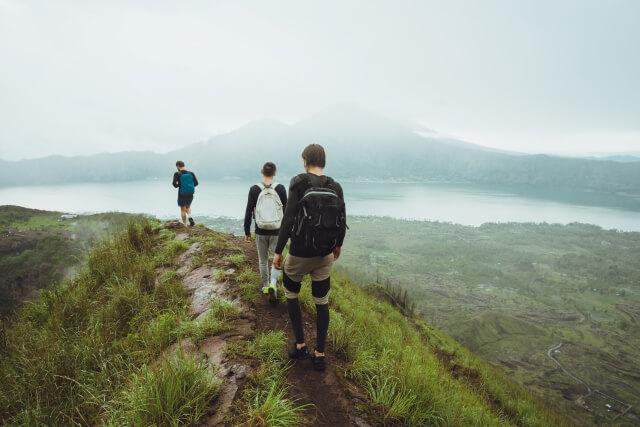
Trekking typically lasts for several days and can be physically exhausting due to the challenging terrain. In general, trekking is more complicated than day hikes. Trekkers typically go on well-maintained, wide paths that include lodges and rest areas along the way.
You spend many days trekking, crossing a variety of terrain. During the walk, you even ascend farther as you cross high-altitude areas and mountain ranges.
The difference between hiking and trekking
Five important distinctions between hiking and trekking were found after a thorough examination of these two sports.
- Distance
There is no precise distance that distinguishes hiking from trekking, but hikes often cover far less ground than treks do. Most people agree that if you can complete it in a single day, it qualifies as a hike. However, some of us can walk up to five miles in a day, while others can go as far as 30.
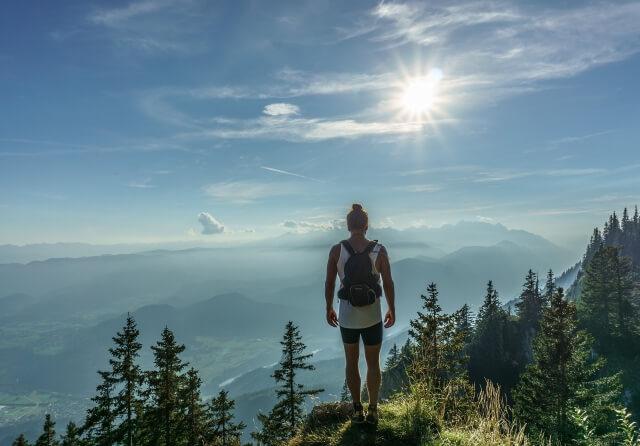
In general, hikes are shorter than 30 miles, whereas treks cover a considerably larger area. In fact, a trip lasting two or three nights might still qualify as a trek. Trekking always requires great distance travel.
This implies that while almost anyone can go on a short trip to enjoy some fresh air and environment, trekkers need to be in far better physical shape to complete the necessary distance each day.
- Duration
This one is related to distance. Trekking and hiking can be distinguished by duration in addition to space. The further you go, regardless of your speed, the longer it will take. Given what we said regarding the length of hikes, it stands to reason that a hike could take you anywhere from a few hours to several days.
If we use the formal definition of a trek as 40 miles or more, the average hiker may take 4-5 days to accomplish. There isn’t a set definition for the trek, but it’s likely one if it lasts longer than a few days. So. Treks can last a week or longer, whereas hikes may typically be completed in one or two days. Trekkers, therefore, need to bring more equipment than hikers.
- Destination
Aside from distance and duration, trekking and hiking can also be distinguished by destination. Hiking, as you know, does not have to include a specific destination. Hiking is defined as any activity that takes place outside in nature. While a mountain or lake may serve as a hiking destination, this is not always the case. Some are simply looping pathways through the woods.

Trekking usually refers to a unique location. This gives treks a sense of purpose that hikes do not have
- Terrain
Last but not least, one of the primary distinctions between hiking and trekking is the terrain. We can all now agree that hikes and treks take place outdoors.
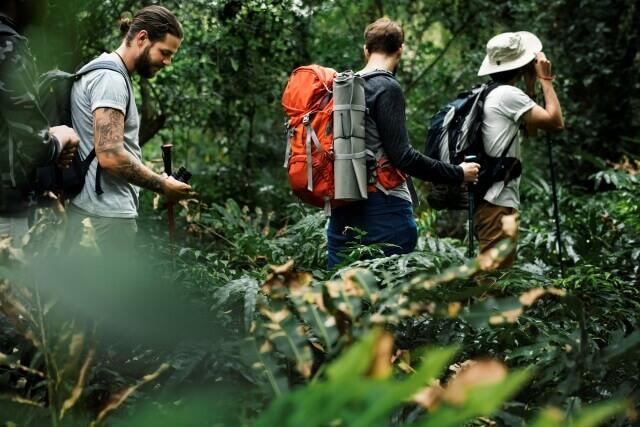
Hikes are typically conducted along established, well-maintained routes. On the other side, trekking typically entails deviating from the path and navigating more rougher terrain. Nowadays, most trekking takes place on pathways and trails. Trekking can also be done on a trail, yet it can also be done in areas without trails.
- Enjoyment
Enjoyment is also an essential factor to take into account when deciding between hiking and trekking. Hiking typically conveys a degree of pleasure as opposed to accomplishing a specific purpose, even though this may not be its official definition. But as you may recall, trekking is, by definition, “exhausting”; thus, it will always be challenging.
Is Hiking or Trekking Better?
Which is better, hiking or trekking? The reply is, “It depends.” The preference you have for hiking or trekking will depend on your own situation.
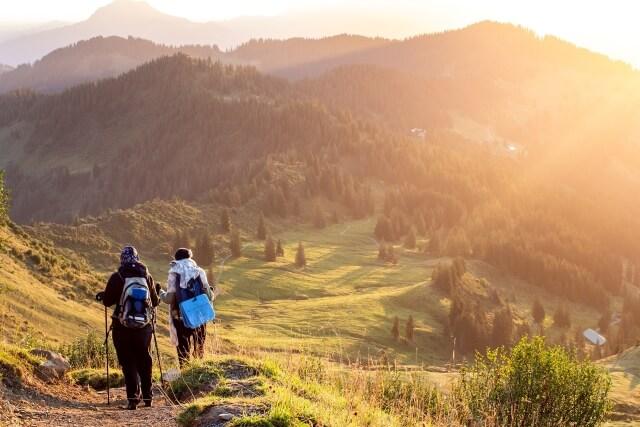
Hiking is the most significant activity for you if you are new to cardio exercises. However, if you enjoy hiking and want to advance your skills, consider a 2-day journey.
Final Thoughts
A long stroll, particularly one that is cross-country or in the woods, is referred to as a hike. Hiking is a leisure-like activity done on already-made roads. Trekking is defined as an extended, difficult journey, usually on foot. This more challenging outdoor activity is designed to put your skills and sanity to the test.
Therefore, trekking is a multi-day activity, while hiking is a long-distance stroll at its most basic level. A hike can be planned the day of, while a trek requires months or years of planning. Go hiking if you’re looking for a relaxing hobby. Trek if you wish to encounter experiences in the wild countryside.
Frequently Asked Questions
Q: What sets hiking apart from trekking?
A: Hiking and trekking are two terms often used interchangeably, but they have distinct characteristics that set them apart. Hiking refers to recreational walking on well-marked trails, typically in natural environments like mountains, forests, or national parks. It is a leisurely activity that can range from a few hours to a full day. On the other hand, trekking involves venturing into more remote and challenging terrains, often requiring multi-day journeys with camping and carrying equipment. Trekking takes you off the beaten path, exploring rugged landscapes and immersing you in a more adventurous experience. So, while hiking is a delightful walk through nature, trekking offers a deeper and more demanding exploration.
Q: What kind of equipment do I need for hiking and trekking?
A: The equipment required for hiking and trekking will depend on the specific terrain, duration, and weather conditions of your adventure. For hiking, essential equipment typically includes a sturdy pair of hiking boots or shoes, comfortable clothing, a backpack for carrying water, snacks, and other essentials, a map or navigation device, and appropriate protection from the sun like a hat and sunscreen. When it comes to trekking, you will need additional equipment such as a durable and spacious backpack, a lightweight tent, a sleeping bag, cooking utensils, a stove, food supplies, and proper insulation layers to tackle varying temperatures. It’s crucial to research and pack the right gear for your specific hiking or trekking expedition.
Q: Can beginners engage in both hiking and trekking activities?
A: Yes, beginners can definitely engage in both hiking and trekking activities, but it’s important to start with appropriate difficulty levels and gradually build up experience and fitness. For beginners, hiking on well-marked and shorter trails with moderate terrain is a great way to start. As you gain confidence and physical strength, you can progress to longer and more challenging hikes. When it comes to trekking, it’s advisable for beginners to join organized treks led by experienced guides. This way, you can focus on enjoying the journey and learning essential trekking skills without having to worry about route planning or carrying heavy backpacks. It’s essential to listen to your body, be prepared, and gradually increase the difficulty of your hikes or treks as you become more experienced.
Q: How can I prepare physically for hiking and trekking adventures?
A: Physical preparation is crucial for both hiking and trekking to ensure a safe and enjoyable experience. To prepare, focus on building your endurance, leg strength, and cardiovascular fitness. Incorporate regular aerobic exercises such as walking, jogging, or cycling into your routine to improve your stamina. Additionally, incorporate strength training exercises that target your leg muscles, such as squats and lunges, to enhance your ability to tackle uphill climbs and challenging terrains. It’s also beneficial to include core exercises to improve your balance and stability. Gradually increase the intensity and duration of your workouts to simulate the demands of hiking and trekking. Don’t forget to consult with a healthcare professional before starting any new exercise regimen, especially if you have any underlying health concerns.
Remember, whether you choose hiking or trekking, both activities offer incredible opportunities to connect with nature, challenge yourself, and create lasting memories. Choose the adventure that suits your preferences and level of experience, and always prioritize safety and enjoyment along the way.




